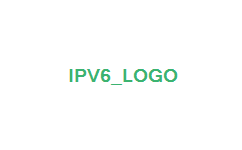The address autoconfiguration process defined in RFC 2462 for IPv6 host is the following:
- The host sends a Router Solicitation message. While routers pseudo-periodically send router advertisements, the host sends a Router Solicitation message to request an immediate router advertisement, rather than waiting until the next router advertisement. By default, up to three Router Solicitation messages are sent.
- If no Router Advertisement messages are received, the host uses a stateful address autoconfiguration protocol to obtain addresses and other configuration parameters.
- If a Router Advertisement message is received, the hop limit, reachable time, retransmission timer, and the MTU (if the MTU option is present) are set.
- For each Prefix Information option present:
If the On-Link flag is set to 1, the prefix is added to the prefix list.
If the Autonomous flag is set to 1, the prefix and an appropriate interface identifier are used to derive a tentative address.
Duplicate address detection is used to verify the uniqueness of the tentative address.
If the tentative address is in use, the use of the address is not initialized for the interface.
If the tentative address is not in use, the address is initialized. This includes setting the valid and preferred lifetimes based on the Valid Lifetime and Preferred Lifetime fields in the Prefix Information option. If needed, it also includes registering the link-layer multicast address of the solicited-node address corresponding to the new address with the network adapter.
- If the Managed Address Configuration flag in the Router Advertisement message is set to 1, a stateful address autoconfiguration protocol is used to obtain additional addresses.
- If the Other Stateful Configuration flag in the Router Advertisement message is set to 1, a stateful address autoconfiguration protocol is used to obtain additional configuration parameters.



No comments:
Post a Comment